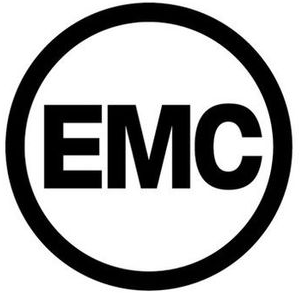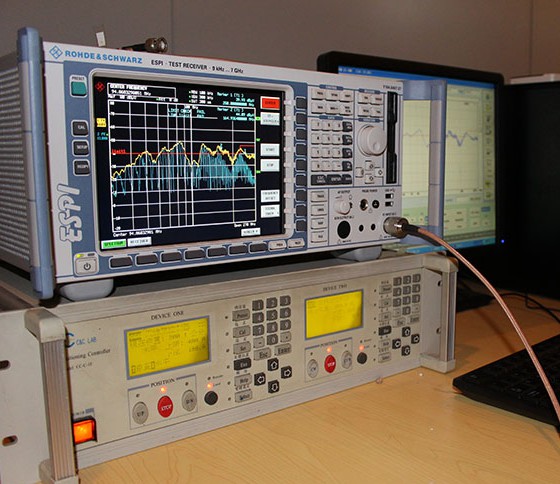Summary of Certification Content
Electromagnetic compatibility (EMC) refers to the ability of a device or system to operate in its electromagnetic environment in accordance with requirements without causing unbearable electromagnetic interference to any device in its environment. Therefore, EMC includes two requirements: on the one hand, it refers to the requirement that the electromagnetic interference generated by the equipment to the environment during normal operation cannot exceed a certain limit; On the other hand, it refers to the device having a certain degree of immunity to electromagnetic interference present in the environment, namely electromagnetic sensitivity. The International Electrotechnical Commission (IEC) standard defines electromagnetic compatibility as the ability of a system or equipment to operate normally in the electromagnetic environment in which it operates without causing interference to other systems and equipment.
1. Command background:
 The Electromagnetic Compatibility (EMC) Directive 89/336/EC was enacted on May 3, 1989, and was enforced on January 1, 1996. The European Commission passed a new Electromagnetic Compatibility (EMC) Directive 2004/108/EC on December 15, 2004. The new EMC Directive will come into effect on July 20, 2007, replacing the current EMC Directive 89/336/EEC. After the implementation of the new EMC Directive, there is a two-year transition period, meaning that products certified under the 89/336/EEC Directive can still be sold in the European market until July 20, 2009.
The Electromagnetic Compatibility (EMC) Directive 89/336/EC was enacted on May 3, 1989, and was enforced on January 1, 1996. The European Commission passed a new Electromagnetic Compatibility (EMC) Directive 2004/108/EC on December 15, 2004. The new EMC Directive will come into effect on July 20, 2007, replacing the current EMC Directive 89/336/EEC. After the implementation of the new EMC Directive, there is a two-year transition period, meaning that products certified under the 89/336/EEC Directive can still be sold in the European market until July 20, 2009.
2. Instruction scope:

All types of electric and electronic appliances or systems, as well as equipment and devices containing electric and/or electronic components. These instruments, devices or equipment are prone to electromagnetic disturbances or their performance is susceptible to such electromagnetic disturbances. The scope of this definition is quite broad, theoretically speaking, it includes all equipment and appliances from electromagnetic driven toys to large-scale industrial equipment. The specific scope of the above general definition is further determined by the product categories listed in Appendix 3 of the directive:
-Household Wireless and TVB receivers;
-Mobile Radio Equipment;
-Medical and Scientific Equipment;
-Household appliances and electronic equipment;
-Electronic teaching equipment (Electronic);
-Radio broadcasting and television transmission equipment (R&TTE);
-Industrial Equipment;
-Mobile wireless communication and commercial wireless telephone equipment;
-Information Technology Equipment (ITE);
-Aeronautical and Maritime Mobile Radio;
-Communication network equipment and instruments;
-General lighting fixtures and fluorescent lighting fixtures (Lighting);
3. Scope of electromagnetic compatibility testing (EMC)
| Electromagnetic compatibility standards for information technology products |
| IEC/N55022,IEC/EN55024,IEC/CISPR22,IEC/CISPR22,FCC PART15,GB9254,GB/T 17618 |
| Electromagnetic compatibility standards for lighting products |
| IEC/EN55015,IEC/EN61547,FCC PART18, IEC/CISPR15 ,GB17743,GB/T 18595 |
| Electromagnetic compatibility standards for household appliances |
| IEC/EN55014-1,IEC/EN55014-2,IEC/CISPR14,IEC/CISPR20,GB4343 |
| Electromagnetic compatibility standards for audio and video broadcasting products |
| IEC/EN55013,IEC/EN55020,IEC/CISPR13,J55013,GB9883 |
| Power harmonic detection, voltage flicker detection |
| EN60555-2,EN60555-3,EN61000-3-2,EN61000-3-3,GB17625 |
| Electrostatic discharge reactance interference detection |
| IEC/EN 61000-4-2,GB/T17626.2 |
| Radio frequency electromagnetic wave anti-interference detection |
| IEC/EN 61000-4-3,GB/T17625.3 |
| Electrical fast pulse group interference detection |
| IEC/EN 61000-4-4,GB/T17626.4 |
| Lightning anti-interference detection |
| IEC/EN 61000-4-5,GB/T17625.5 |
| Transmitted to anti-interference detection |
| IEC/EN 61000-4-6,GB/T17626.6 |
| Power frequency magnetic field anti-interference detection |
| IEC/EN 61000-4-8,GB/T17625.8 |
| Voltage transient anti-interference detection |
| IEC/EN 61000-4-11,GB/T17626.11 |
| Wireless products EMC, RF standards |
EN300220,EN300328,EN301489,EN300440,EN301357,FCC 47 CFR PART15 |